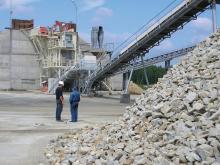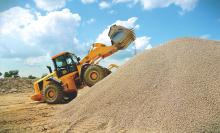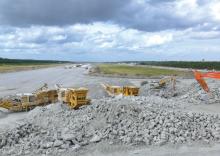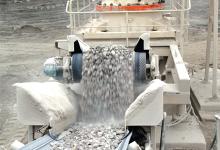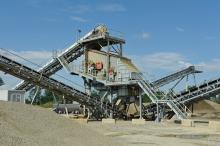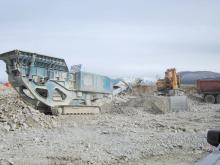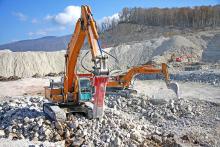
The biggest country in the world, with probably the most diverse geology, Russia is also a relative newcomer to some of the Western business practices and attitudes that its global counterparts take for granted
After the collapse of communism, Russia had no SME style businesses as we see them in the West - dynamic and aggressive developers of new markets and ideas that can move geographically and economically to fill voids in the marketplace.
The re-education and development of these smaller businesses is still evolving, as are the rules and procedures for each industry and the economy that will allow such new SMEs to thrive. In addition, the massive size of Russia makes the creation of a distribution system very hard - and the development of effective systems and the facilitation of new companies into the market place are the most important elements of creating competition in the country.
But it's not a gloomy picture. Russia is one of the fastest growing markets in the world, with the World Bank predicting growth of 4.8% in 2011. Russia's huge need for improved infrastructure and transport systems - financed by government initiatives and private corporations alike - is very good news for aggregates producers.
As a general backdrop, aggregates production in Russia comprises crushed stone and gravel, at 51%, sand - 33%, with 'other materials' making up the remaining 16%.
Some of the widespread nature of the industry figures is revealed by one new study: Russian market for sand, crushed stone and gravel 2005-2010, forecast for 2011-2012, conducted by AMIKO. It shows that 22% of the total Russian volume of the production of non-metallic construction materials (sand, crushed stone and gravel) comes from the Central federal region. Second largest producer is the Urals, with19%, and in third place is North Western with about 18%.
The total volume of production in the Central Federal District in 2010 was about 62.1million m3, 27% less than 2008's top figure of 85.1million m3. The Moscow region, at 14.2million m3, has the biggest production in the Central area, followed by the Voronezh region with 9.1million m3 and Tula with 4.2million m3.
In the Urals there was a huge drop between 2008 and 2010 of nearly 50% - from 111 million m3 down to 56.7million m3. A smaller but still significant reduction of 20% in the two years showed in North Western, which went down from 65.4million m3 to 52.2million m3.
Another recent publication, Russia: Market for Non-metallic Building Materials: Silica Sand, Crushed Stone, and Gravel. Analysis and Forecast to 2016, shows more evidence of recent decline. It states: "The upward dynamics of production of non-metallic building materials which has developed in the last few years (growth rates: in 2006 - 114% and in 2007 - 124%), has been replaced by a sharp decrease in early 2009. Throughout 2009, there was a sharp decrease in the production volumes compared to 2008, so that in the crisis year of 2009 as a whole, the production of non-metallic building materials decreased by 36%."
Diversity
The geological diversity of Russia means that deposits are distributed over a vast area, and so almost every region boasts a certain level of extraction, and production. But there is no single market, hence the allocation by federal regions.
As it stands at the moment, the Russian aggregates market comprises more than 700 companies of differing production capacity. The top three of these are Pervaya Nerudnaya Kompaniya (First Aggregates Company) - the largest aggregates producer in Russia according to production capacities, with more than 10 quarries all over the country. The second largest one is
The size of the country, and the corresponding size and diversity of its aggregates industry, will obviously lead to a similar range of issues affecting the market - from price rises to optimism for the future. But what do these issues mean to the companies involved? The Pavlovskgranit group employs 5,200 people, and has partners in the 35 areas of the North-Western, Southern, Central and Volga federal districts. Spokeswoman Julia Galanova said, "The reforms undertaken by major Russian freight forwarder Russian Railways, combined with a regular increase in railway rates, means aggregates producers need to increase prices as well.
Taking into account that approximately 30% of the crushed granite is transported by trucks, and 70% of the production is transported by railway, it is a very acute problem leading to rising prices for products. The market players are quite optimistic about the market growth but everybody is concerned about the issue of railway rates regulation.
"Rising prices lead to another acute problem, which is a decrease in competitiveness," she added. "No matter that Russian producers of crushed granite stone can satisfy the domestic demand, recently the Ukrainian producers have managed to occupy the considerable market share in the European part of Russia. It is connected with the fact that Ukraine started to apply reduced railway rates: as a result there is a reduced customs cost of crushed stone imported from Ukraine. So Russian crushed stone becomes non-competitive.
"To stay competitive, Russian aggregates producers have to sell at reduced prices, which is not economically beneficial. Russian Railways purchases Ukrainian crushed granite for its purposes, so Russian producers have lost their biggest customer, taking into account that railway road construction is one of the biggest sales markets." Aggregates are not budget forming products in Russia, she explained, so the aggregates industry - including the effects of the Ukrainian dumping issue - is not regulated by the government.
"Imperfect technologies and out-of-date state standards in road construction slow down the aggregates market development in terms of making new products according to European standards," added Galanova. "With the admission of Russia into the WTO, the ecological requirements for aggregates producers become more severe. As a result, producers have to modernise their production processes and improve the product quality, which requires big investments and new technologies - for example, the best practices exchange with Europe."
Growing demand
The consumption of crushed granite stone is expected to increase in 2011-2015 thanks to big construction projects in connection with the Winter Olympic Games 2014 in Sochi and Russian Railways investment projects.
The crushed stone market is expected to increase to 204million m3 by 2015, but it will not reach pre-crisis performances due to the lag in the rate of road building recovery, said Galanova. "No matter that the Russian government states that they will support the development of new federal roads and increase the investment in road construction sector, the situation is expected to get worse due to the lack of budget funds."
Despite the negative developments in the Russian economy in recent years, though, there is certainly potential for improvement. Major plans that will require huge amounts of non-metallic construction material include: The development of the Federal Road Fund, which will allocate $8.8billion to road construction and maintenance in 2011; 14,000 km of new roads will be built by 2015, including a Moscow-St. Petersburg toll road; €1billion redevelopment of Pulkovo Airport in St. Petersburg; €8.4billion for construction of sports facilities, hotels and transportation systems for the 2014 Winter Olympic Games in Sochi; APEC Summit in Vladivostok in 2012 is driving huge investments in construction and infrastructure modernisation; and plans to spend €7billion on the 2018 World Cup.
Russia is a new economy and is still developing the mature democratic processes that over many decades have given western states checks, balances and fair opportunities. But the vast country has plenty of natural resources and there's no doubt that its aggregates industry will do all that it can to maximise the profit that lies in the earth.

